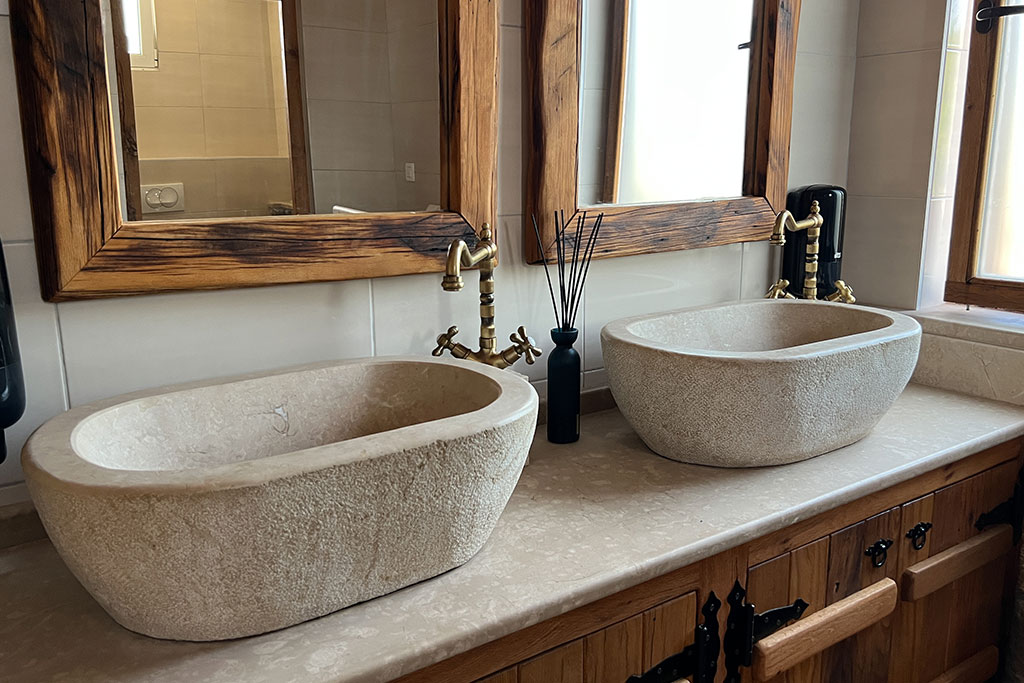How to Pick High-Quality Furniture
Whether you’re curating pieces for your new home or making elegant upgrades to your longtime abode, furniture shopping can feel like a whirlwind as you peruse the aisles or websites of retailers.
There are so many important features to consider, from size and shape to colors and patterns, all of which are crucial to selecting the right product. But there’s another essential factor to consider before you buy: quality craftsmanship.
Well-made pieces constructed from sturdy materials aren’t just more visually stunning—they’re also far more likely to stay with you for many years. Luckily, you don’t have to set your search filters to the top end of the price range to find furniture that lasts. Even affordable options from lower-cost retailers and secondhand shops can wow guests and become family heirlooms someday. Follow this simple good-furniture guide to help you hunt for products that will perfectly elevate your design scheme.
Wood
It may seem tough at first glance to distinguish authentic, well-crafted wooden furniture from flimsy imitation alternatives, especially as they become more realistic looking. There is, however, a reliable test you can use when shopping for wooden chairs, tables, and more: give them a lift. Furniture made from natural wood like pine or oak will be substantially heavier than that made of plastic or particleboard. As another assessment of strength, give pieces with multiple joints a firm wiggle. Good wooden furniture should be steadfast, and its parts shouldn’t move independently unless they’re clearly intended to do so (e.g., drawers and cabinet doors).
If you’re shopping from a secondhand store, verify that any products you find are still in good condition. Some scratches or scuff marks may be acceptable, but the wood should not reveal any discoloration, soft spots, or musty odors, which could signify that a piece is unlikely to hold for much longer.
Naturally, you’ll need to get up close with furniture to gauge its quality, a reality that may make shopping online a risky decision. If you do decide to go this route, only procure goods from digital retailers with excellent reviews, detailed product descriptions, and a clear money-back guarantee. Also, consider buying a small decorative item first to test the store’s quality promise—then you can feel more confident throwing cash at a bigger investment piece.

Stone and metal
Genuine stone has been beloved for centuries thanks to its top-tier durability and resistance to the elements. However, like wood, it is fairly easy to mimic with plastics and other inauthentic materials. But imitation versions of marble, slate, and other stones always fail one major assessment: the temperature test. Natural stone should feel cold to the touch, an effect you can attribute to its high thermal conductivity, which allows it to transfer heat quickly. That means if you touch an earthy-looking table, stool, or bench and it feels room temperature, you’re likely dealing with an imposter.
Even authentic stone can degrade over time, so to ensure that you take home an enduring piece, look it over for signs of damage. These may include stains, edge or corner cracks, or large or uneven gaps between the stone and another material (like a metal border or wooden legs).
Metal, like stone, is usually cold to the touch when genuine, making it crucial to get hands on with this type of furniture when shopping. Additionally, give it the wiggle test to confirm it has sturdy joints, and evaluate secondhand pieces for rust or peeling paint. To avoid such damage from occurring on items you intend to put outdoors, it might be better to opt for imitation metals that are more weather hardy. But true iron and steel are among the sturdiest and longest-lasting wares for your indoor furnishings.

Upholstery
A necessity for living rooms and a comfortable option for dining or bedroom pieces, upholstered furniture is the kind that’s perfect to sink into at the end of a long day. To avoid hearing a rip when you sit back or seeing stuffing leak from your cushions, keep a keen eye when making your selections. As you shop, inspect upholstered lining or cushions for straight, even seams without loose threads, and check patterns to ensure that there’s consistency rather than awkward breaks where two fabric panels meet.
Just as essential to consider is your choice of material, which will largely depend on your lifestyle. Pet-owning and child-rearing shoppers should seek out robust fabrics like wool and may also prefer ones with a high double-rub count, a measure of how much abrasion from sitting and lounging a fabric can handle before it starts to fray; the furniture experts at Calgary Interiors recommend upholstery with a rating between 12,000 and 20,000 rubs. You can find this figure on a product’s tag or fabric swatch or ask a store representative for details.
More delicate-yet-refined fabrics such as velvet can’t handle quite so many rubs, but they may still call your name for the luxe effect they add to any room. To verify that you’re in the presence of a genuine beauty, check the manufacturer’s label (not the store’s price tag), which will reveal the upholstery’s fabric type.
Additionally, there are various types of filling materials available, each offering distinct benefits like plushness or firm support. No particular one is necessarily more optimal than another, so this will be a more subjective decision. Simply touch furniture to determine if it offers what you’re looking for; again, this may make shopping for upholstered furniture in person more preferable.

Brand
If you’d rather save yourself the hassle of putting every piece of furniture under a magnifying glass, there’s an alternative: find a brand, interior designer, or retailer you trust. There’s no better proof of quality than living with pieces and experiencing their reliability, so if you’re hungry for new finds, track down the origins of your current favorites or seek recommendations from a loved one.

Most importantly, stress quality over pure aesthetics or cost savings as you shop. Florida-based interior designer Laetitia Laurent advises against decorating with what she calls “fast furniture,” or poorly made, low-cost pieces that keep up with short-lived trends. “If you buy trendy and inexpensive furniture, it will break down quickly,” she says. “There’s an old French saying: ‘You have to be very rich to buy cheap stuff.’” High-quality furniture, on the other hand, will stand the test of time with its superior craftsmanship, remaining part of your home and family for years to come.


















